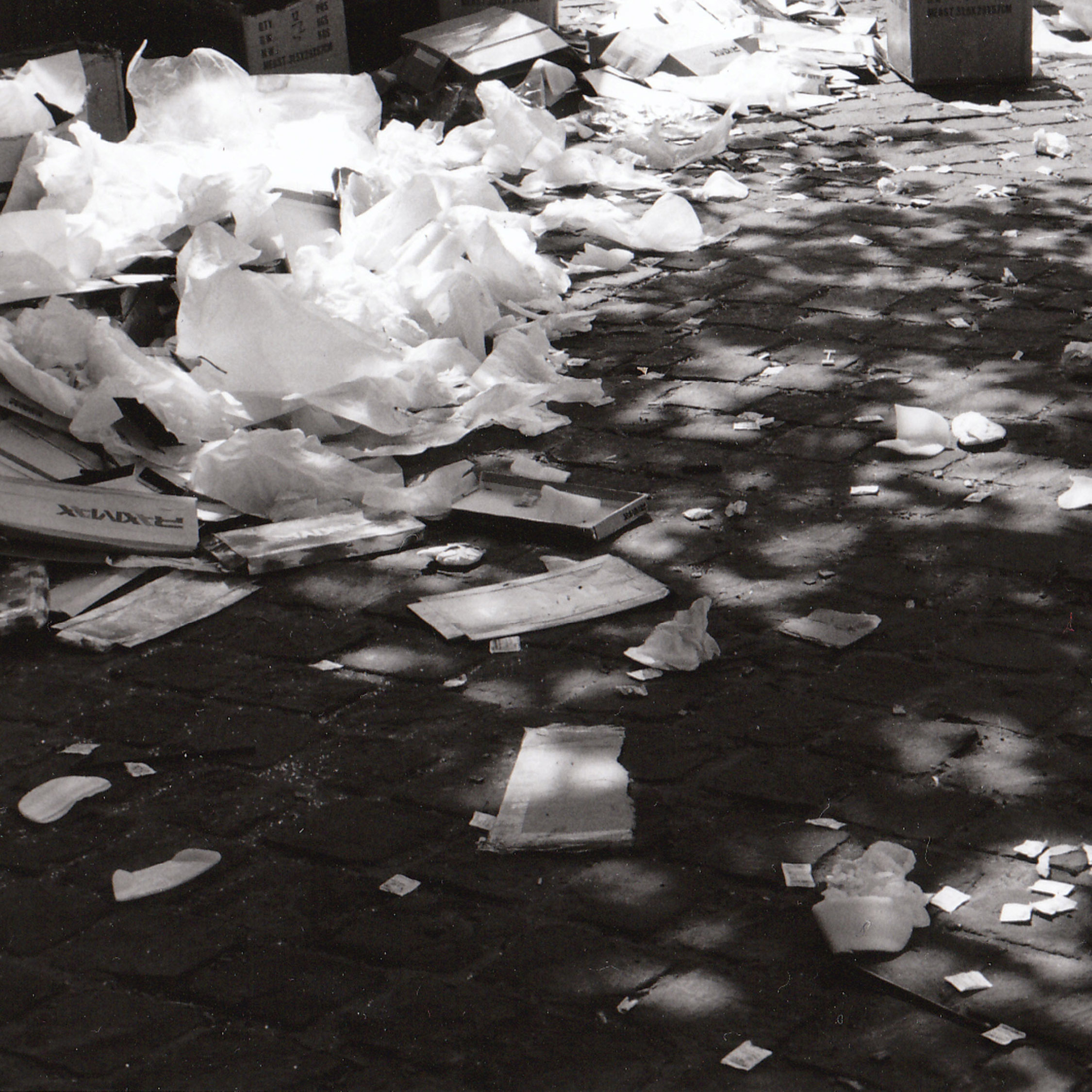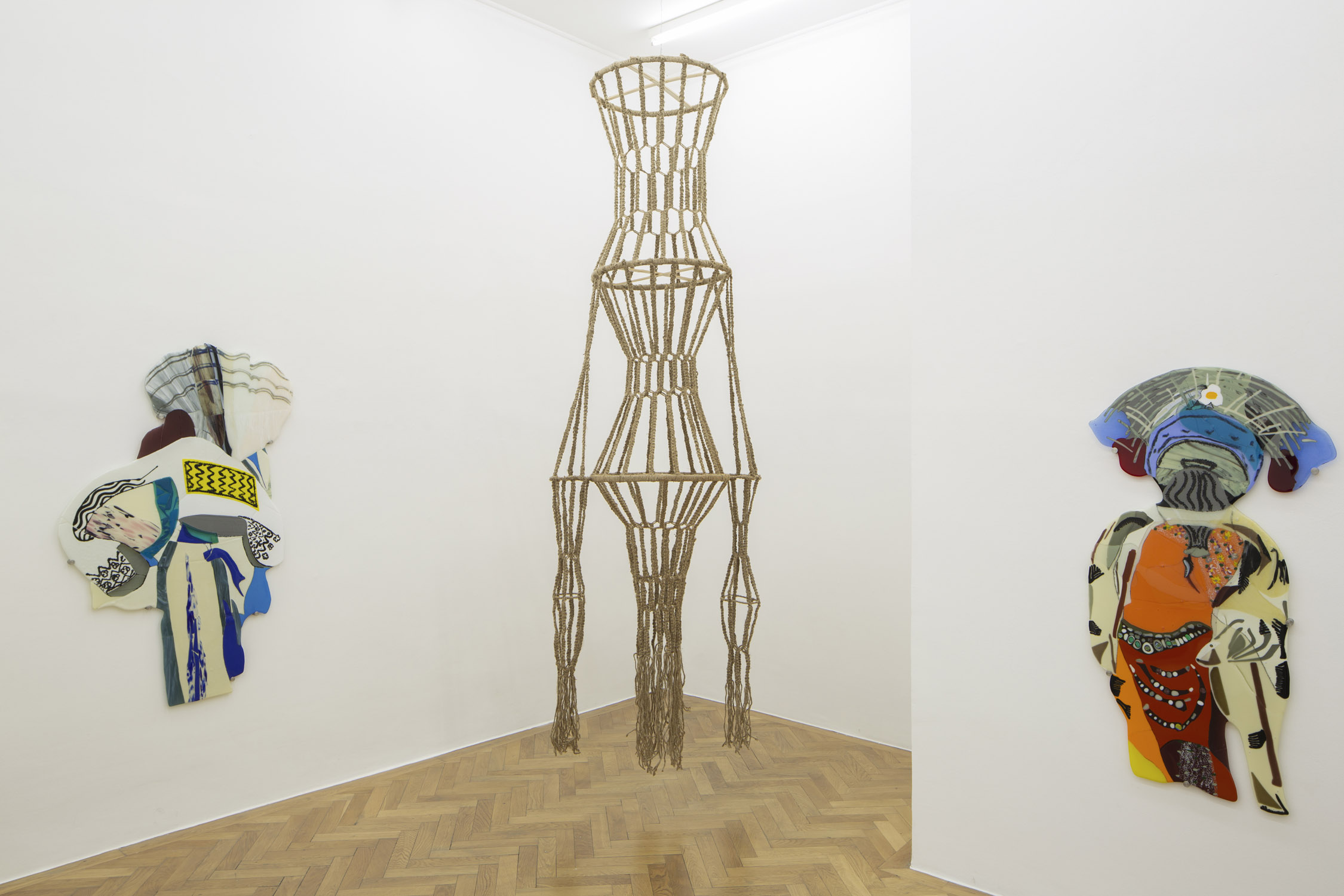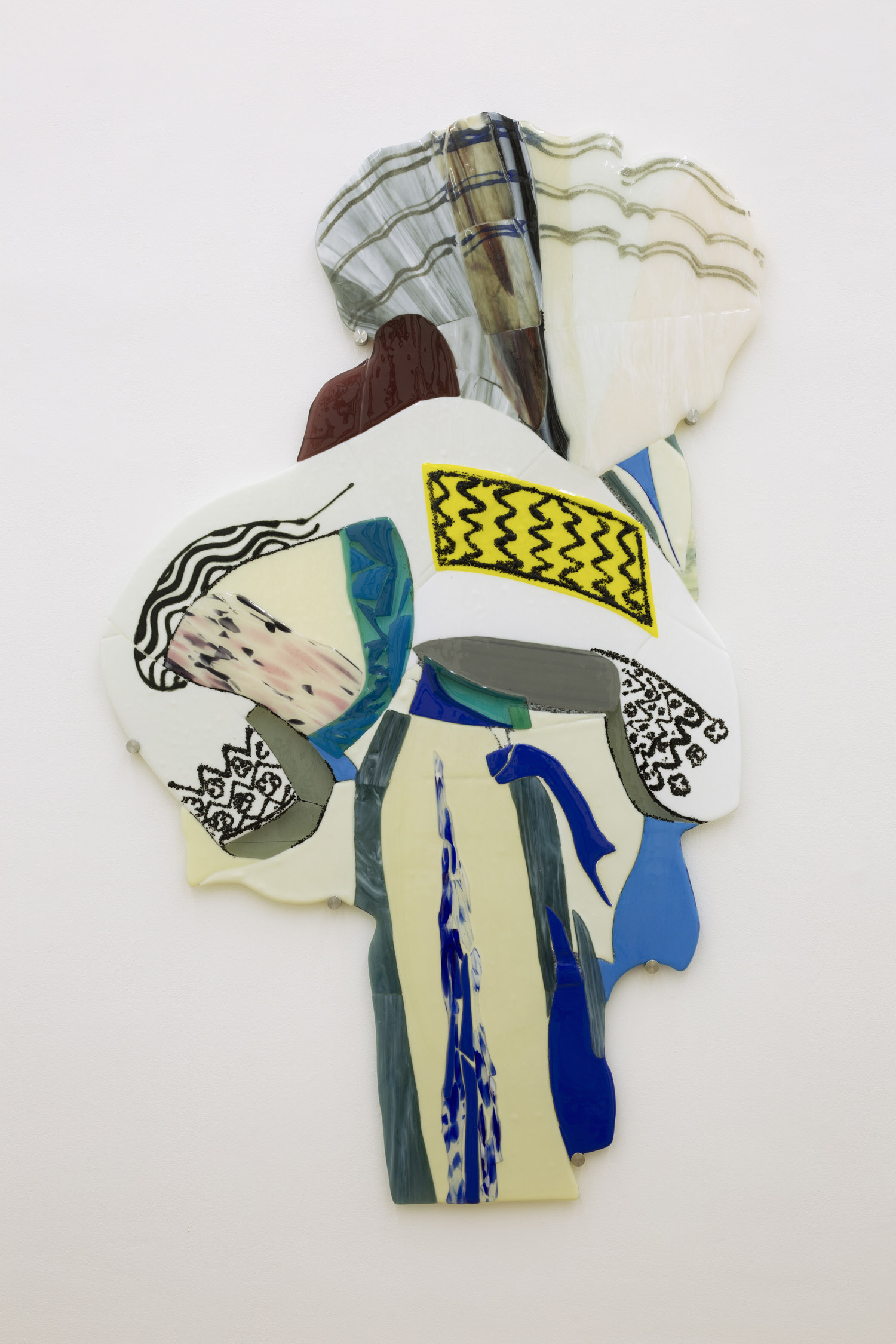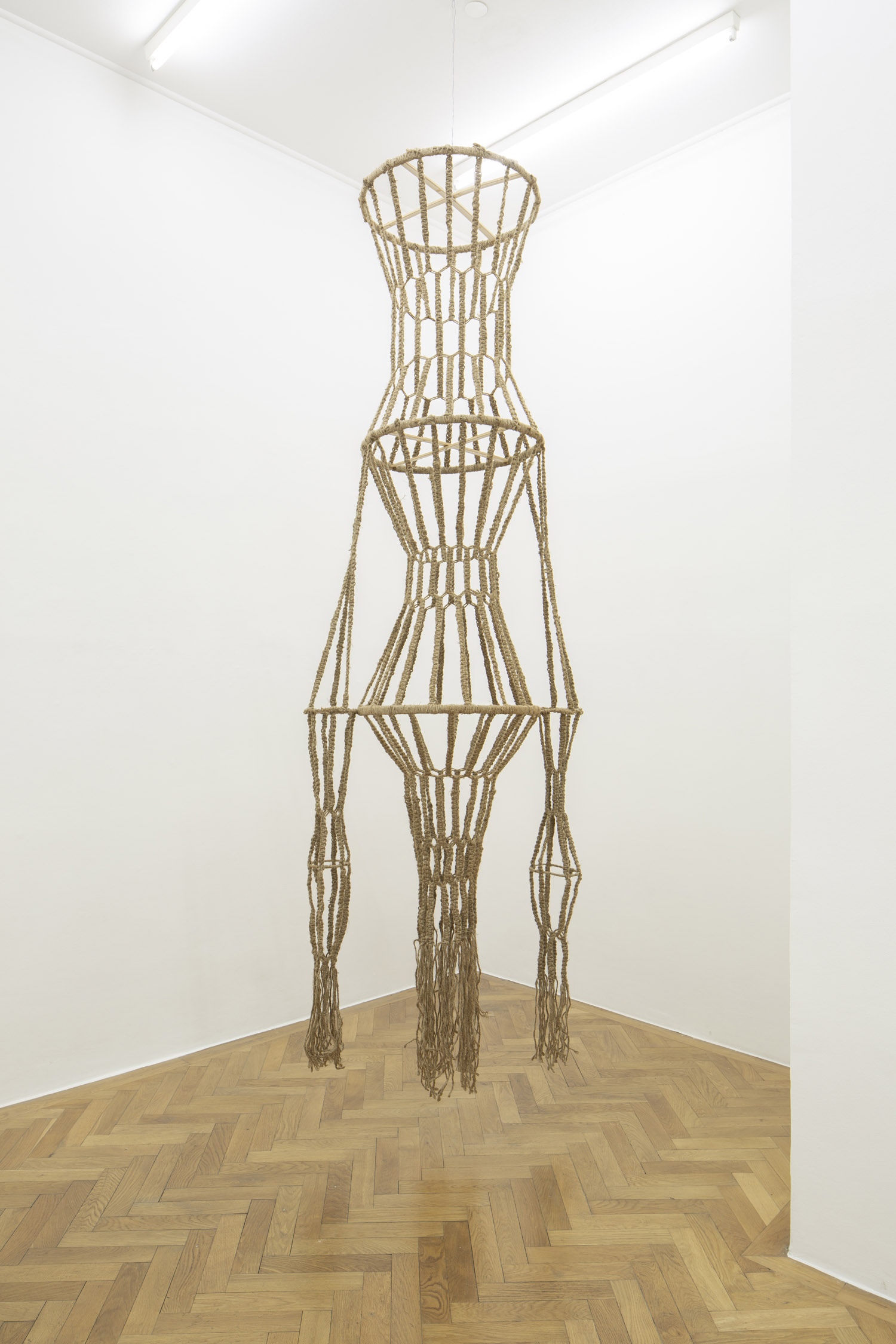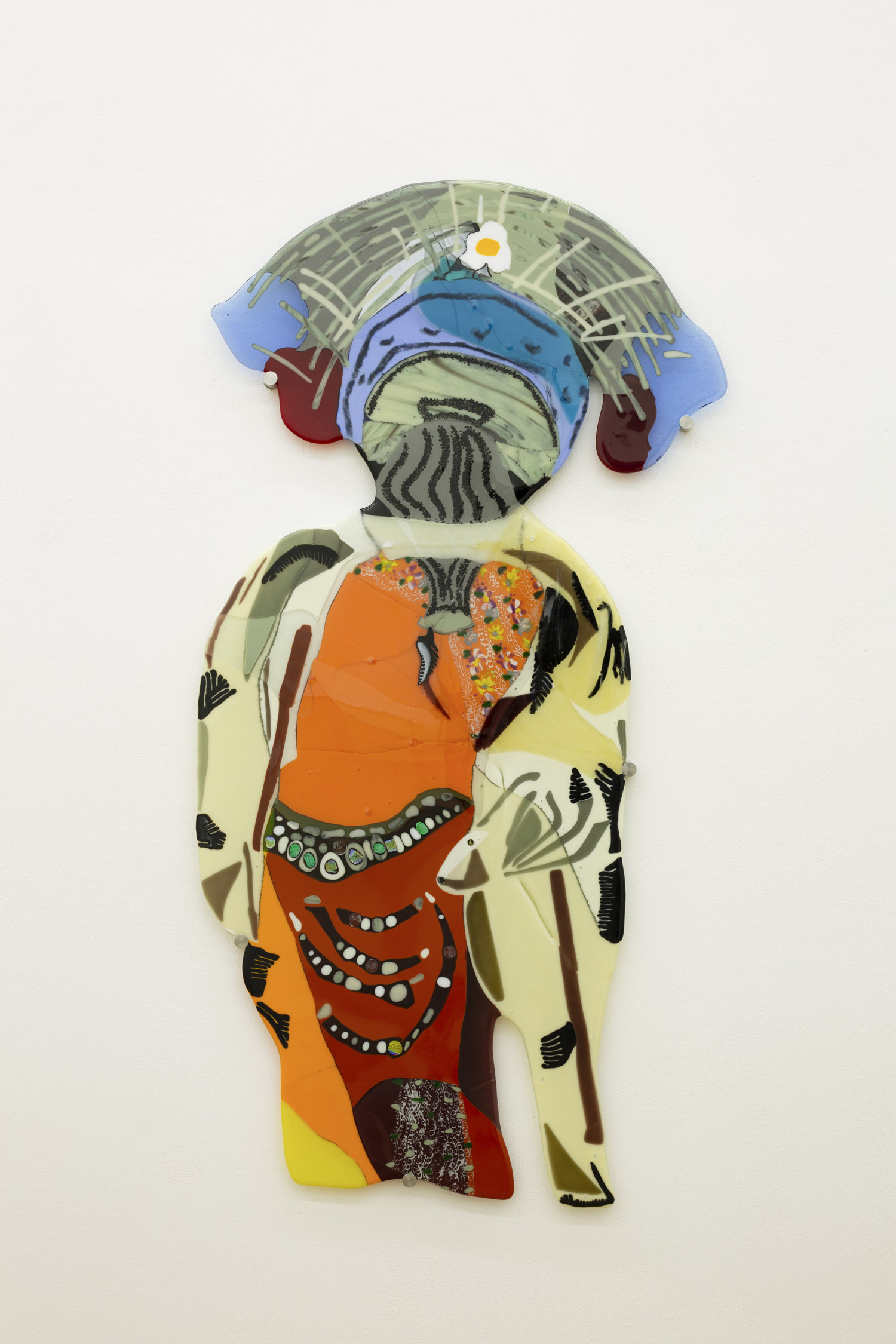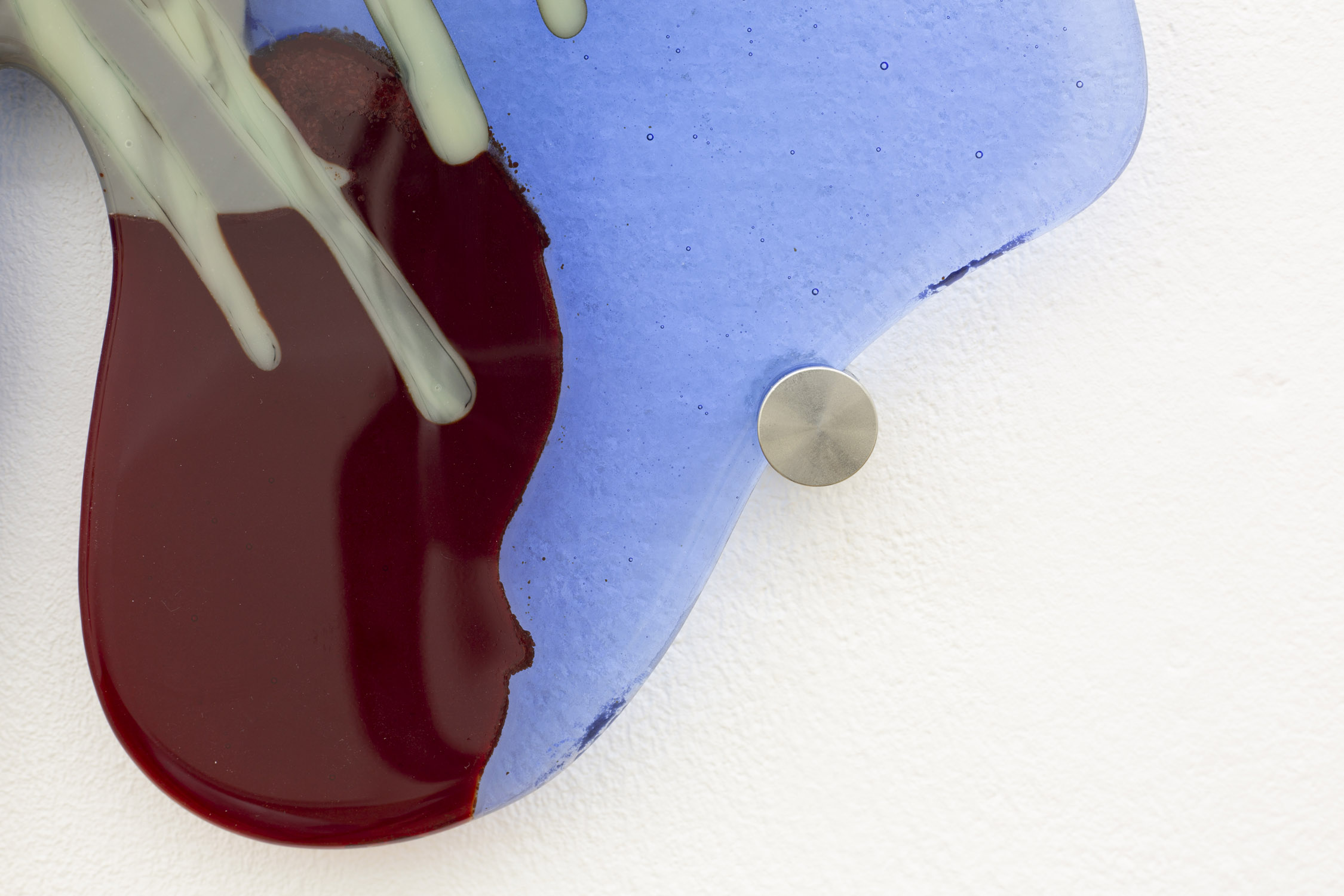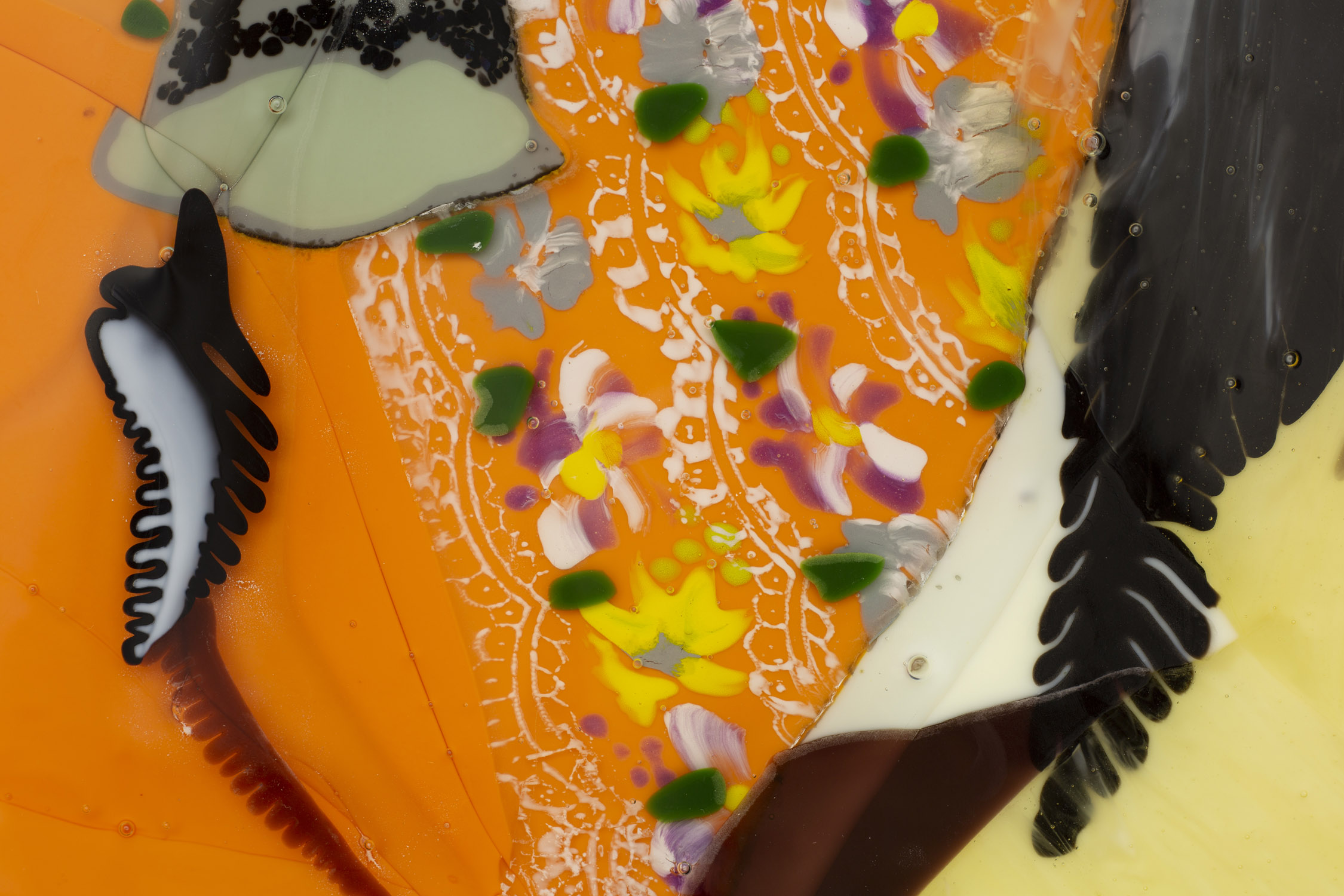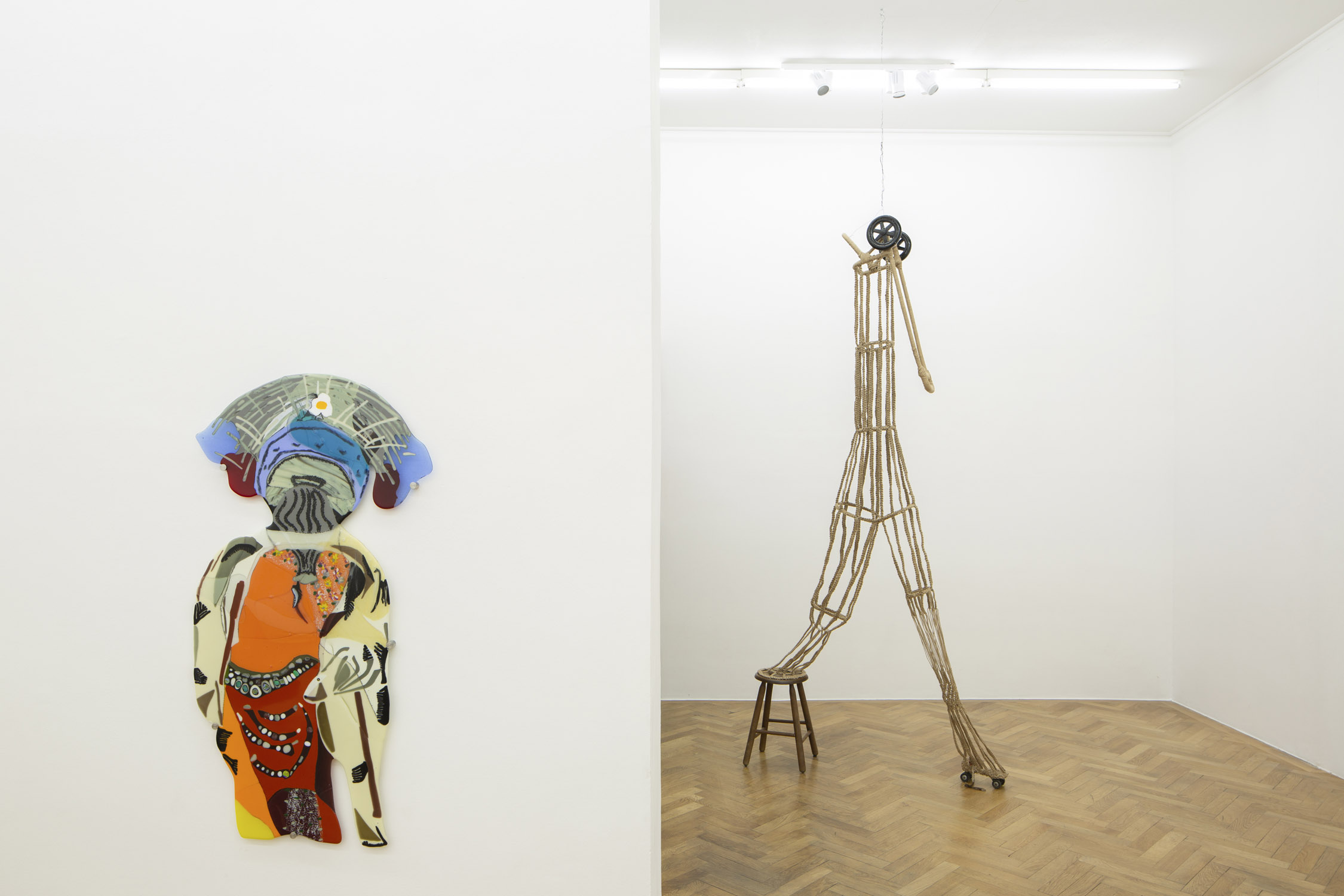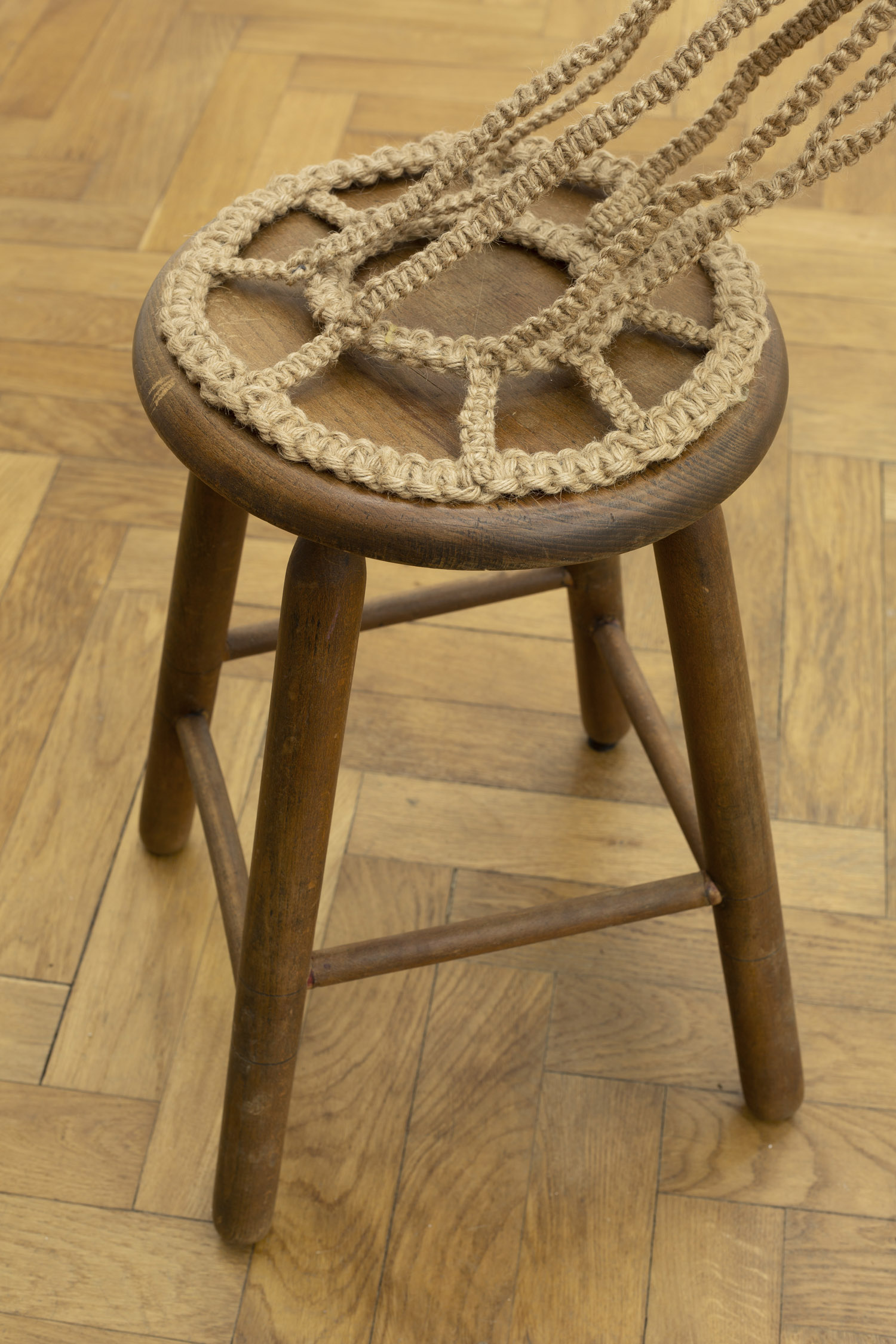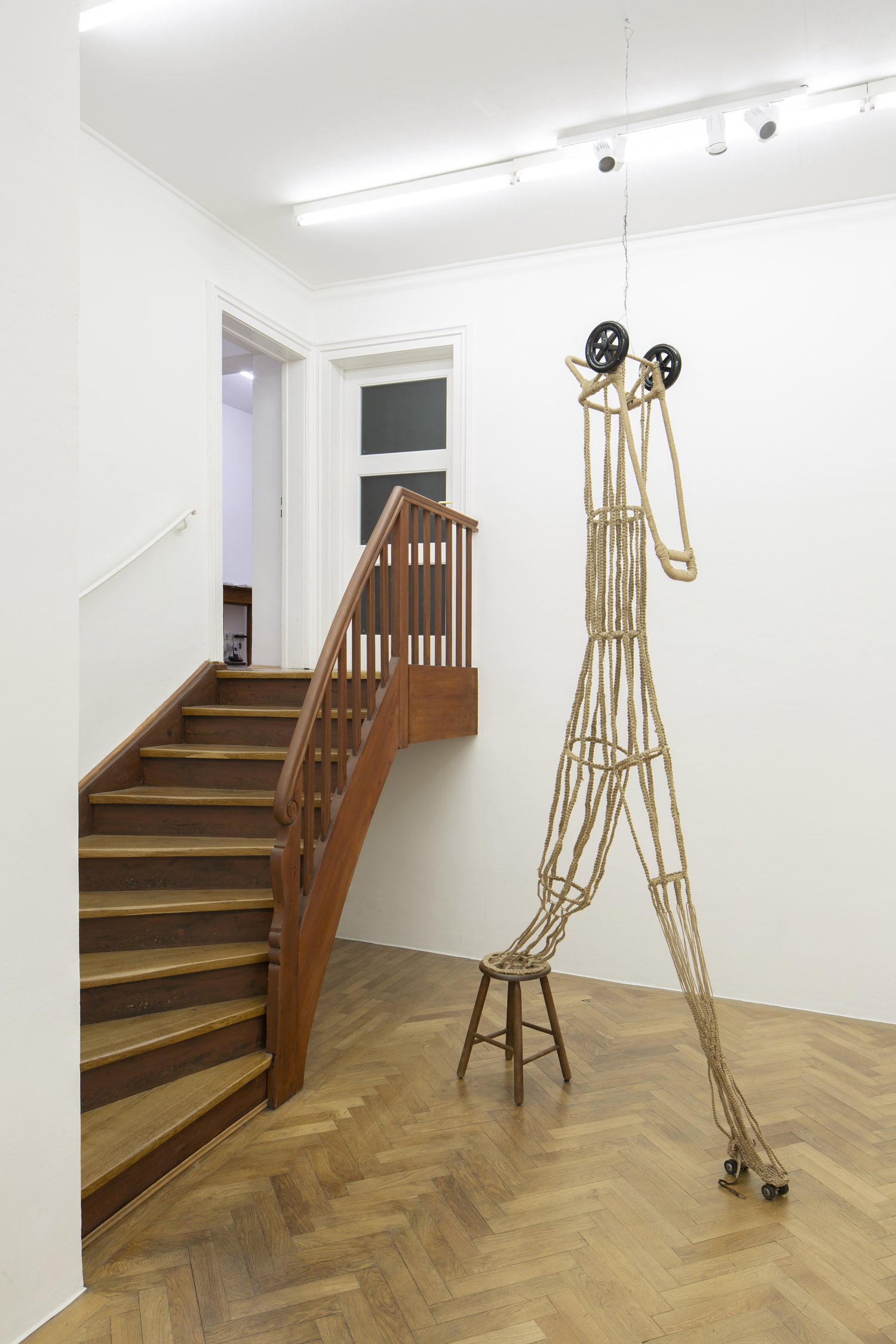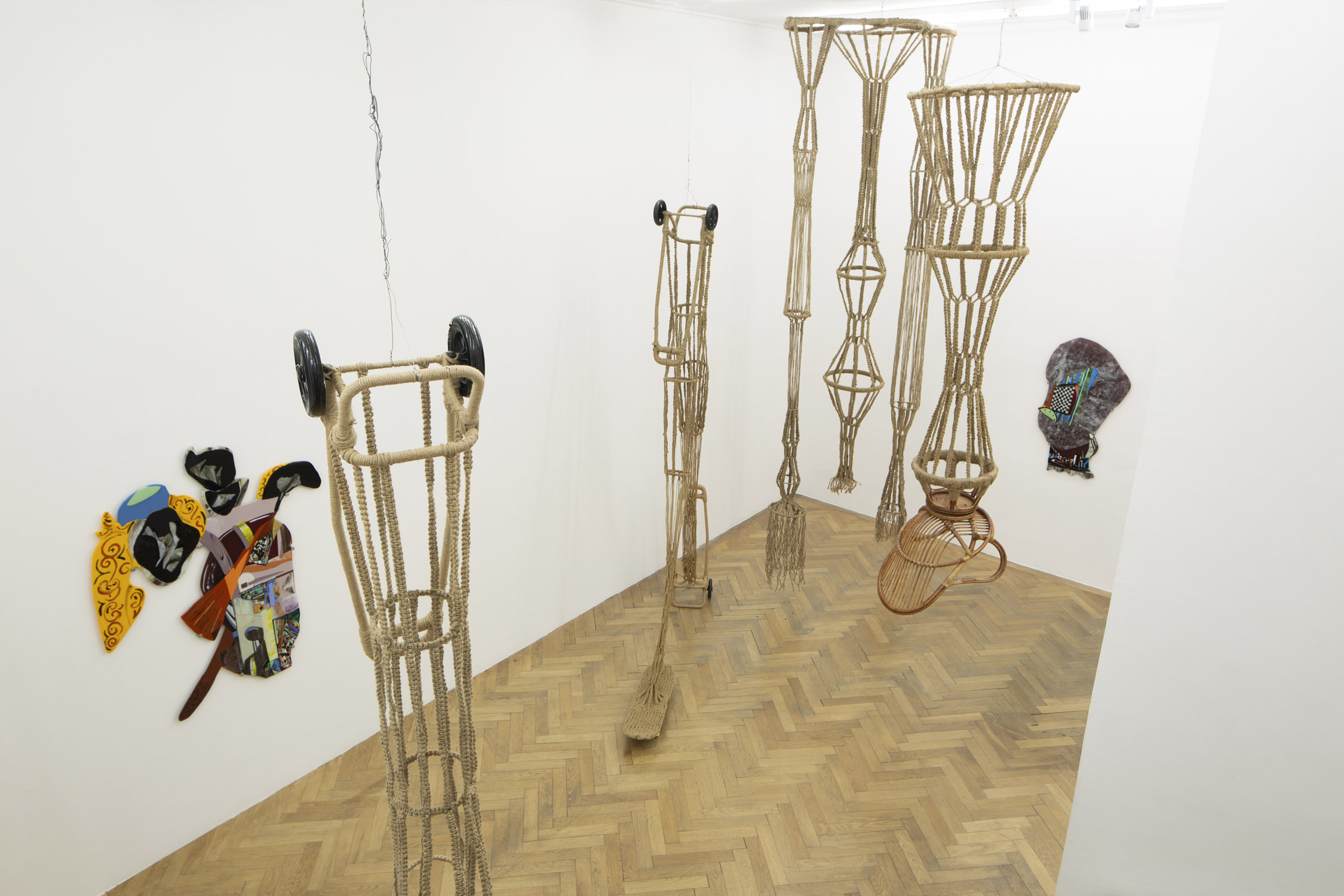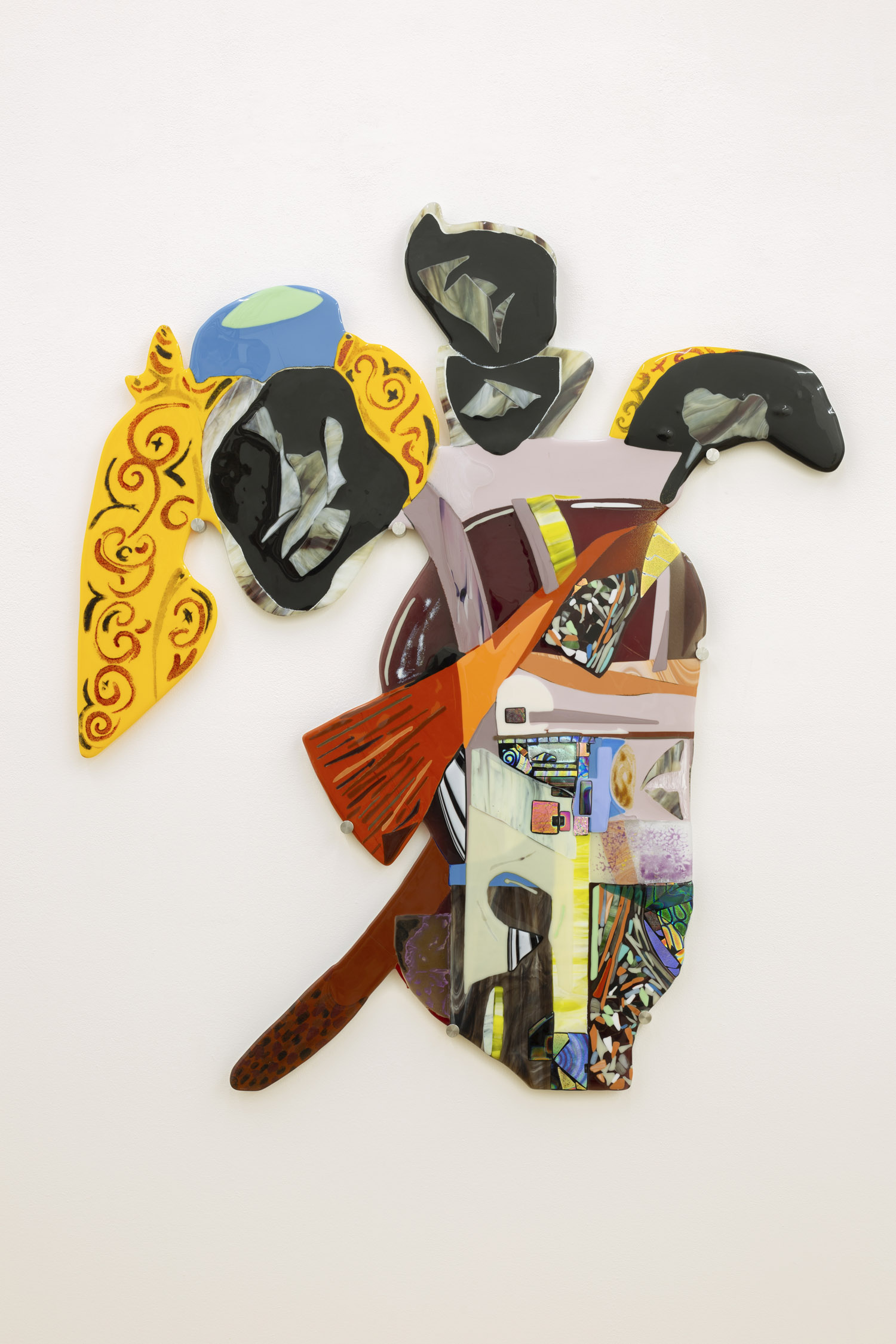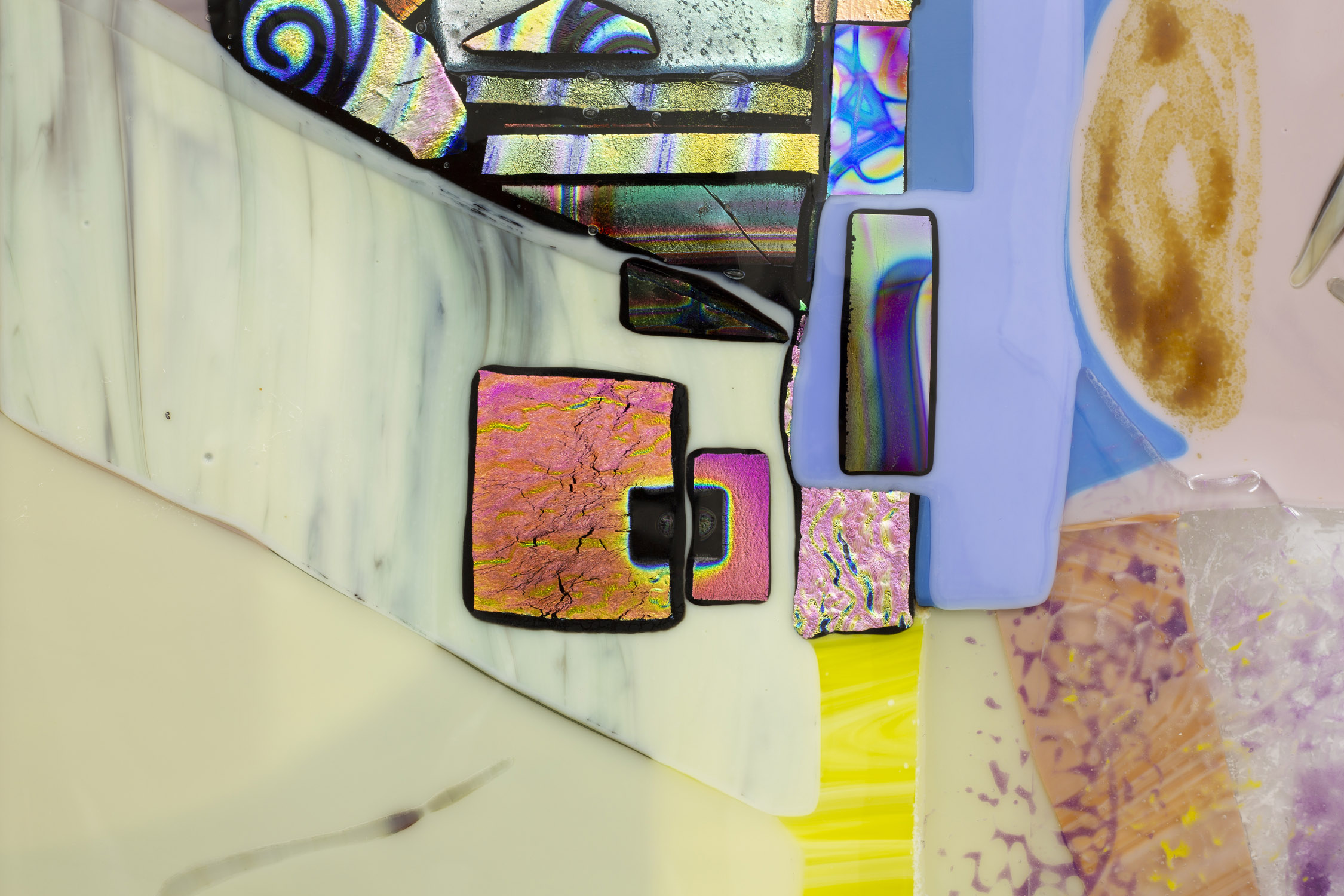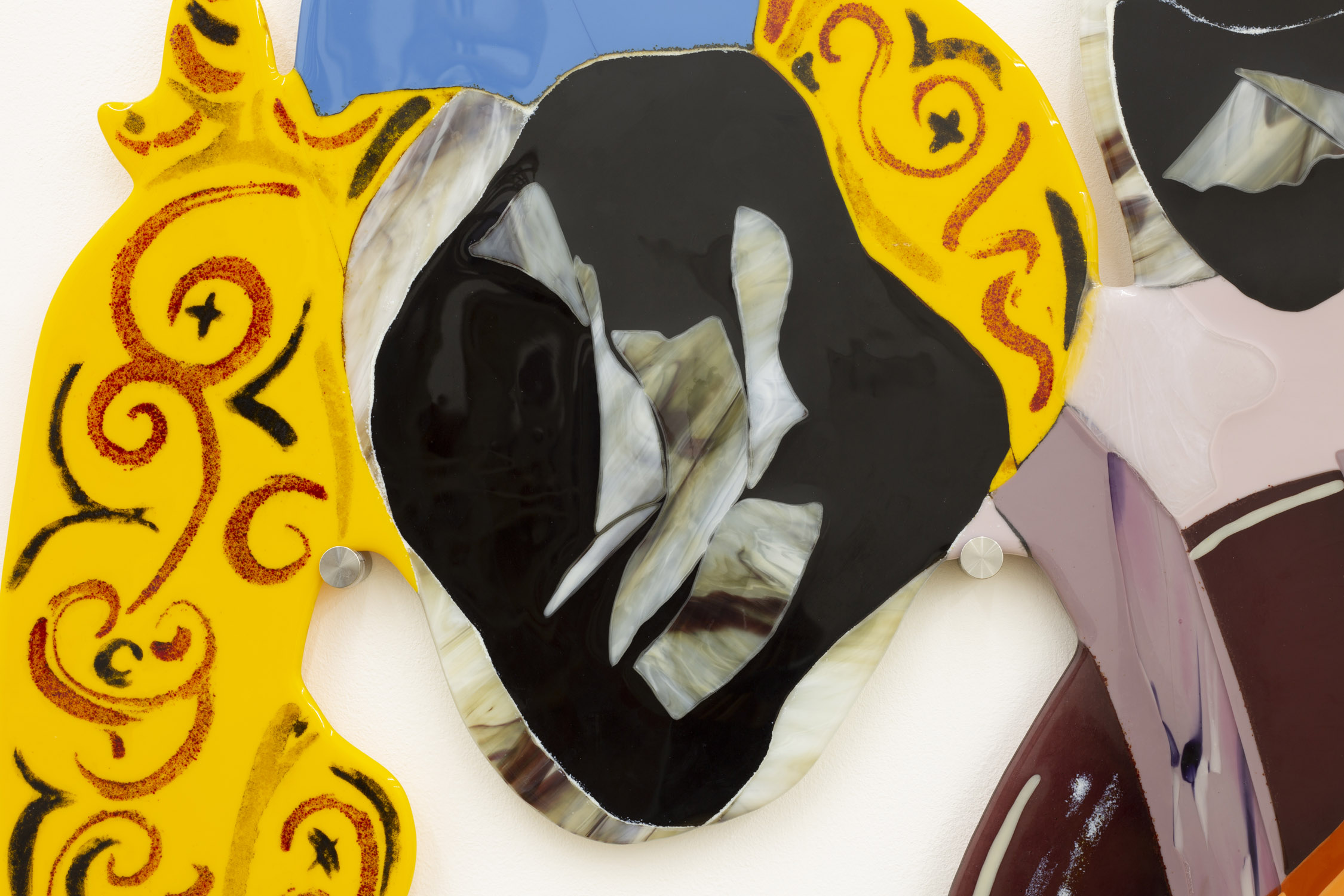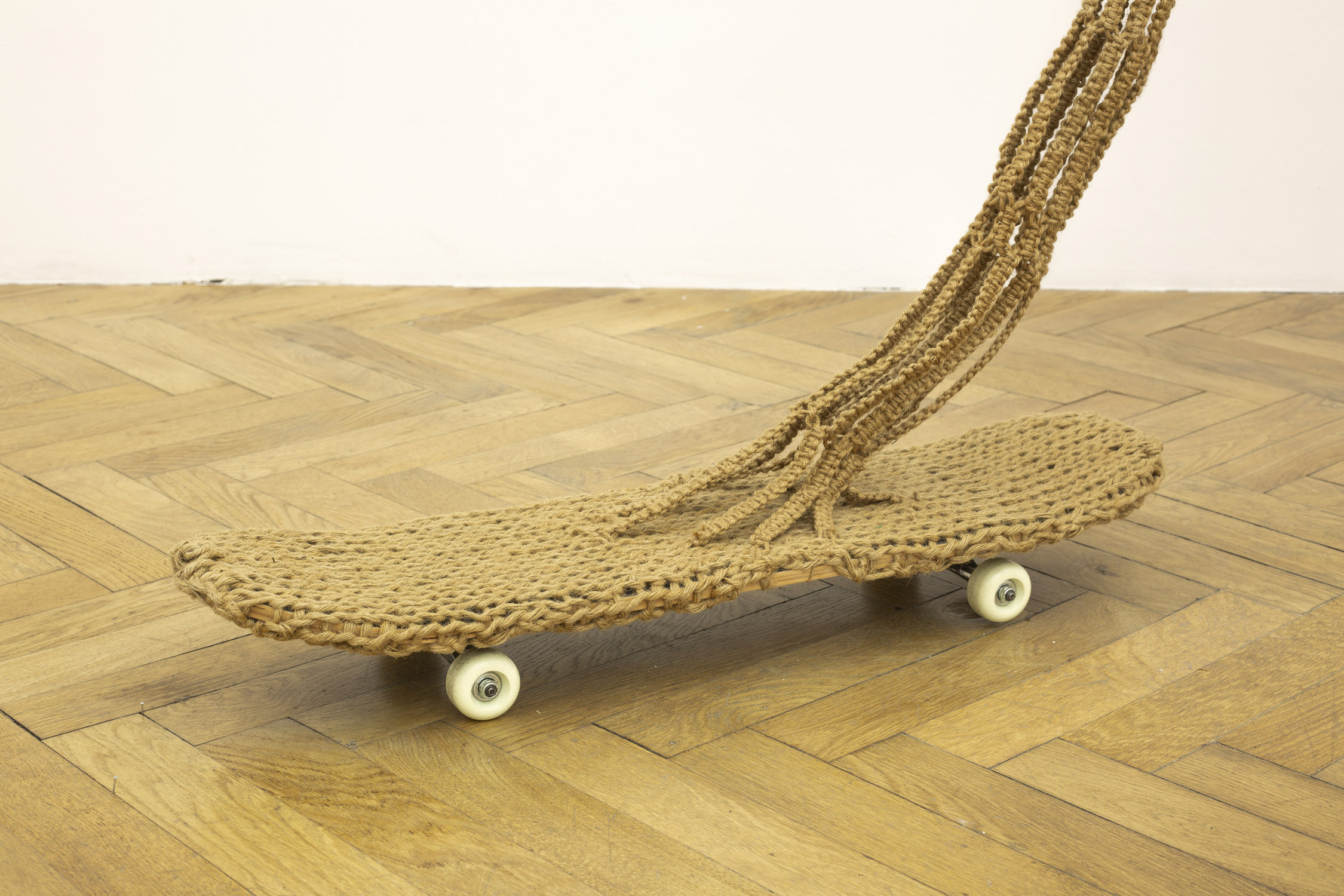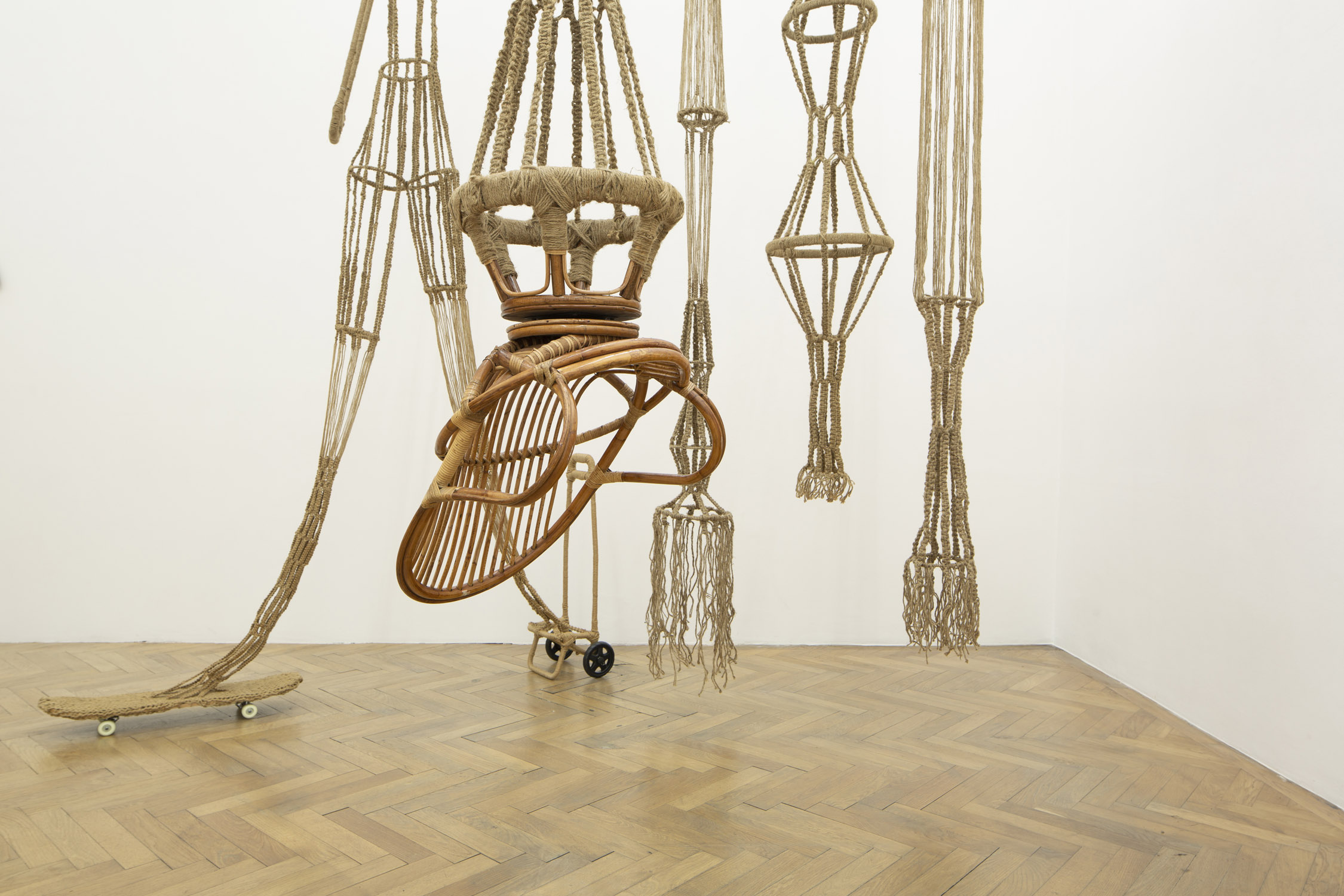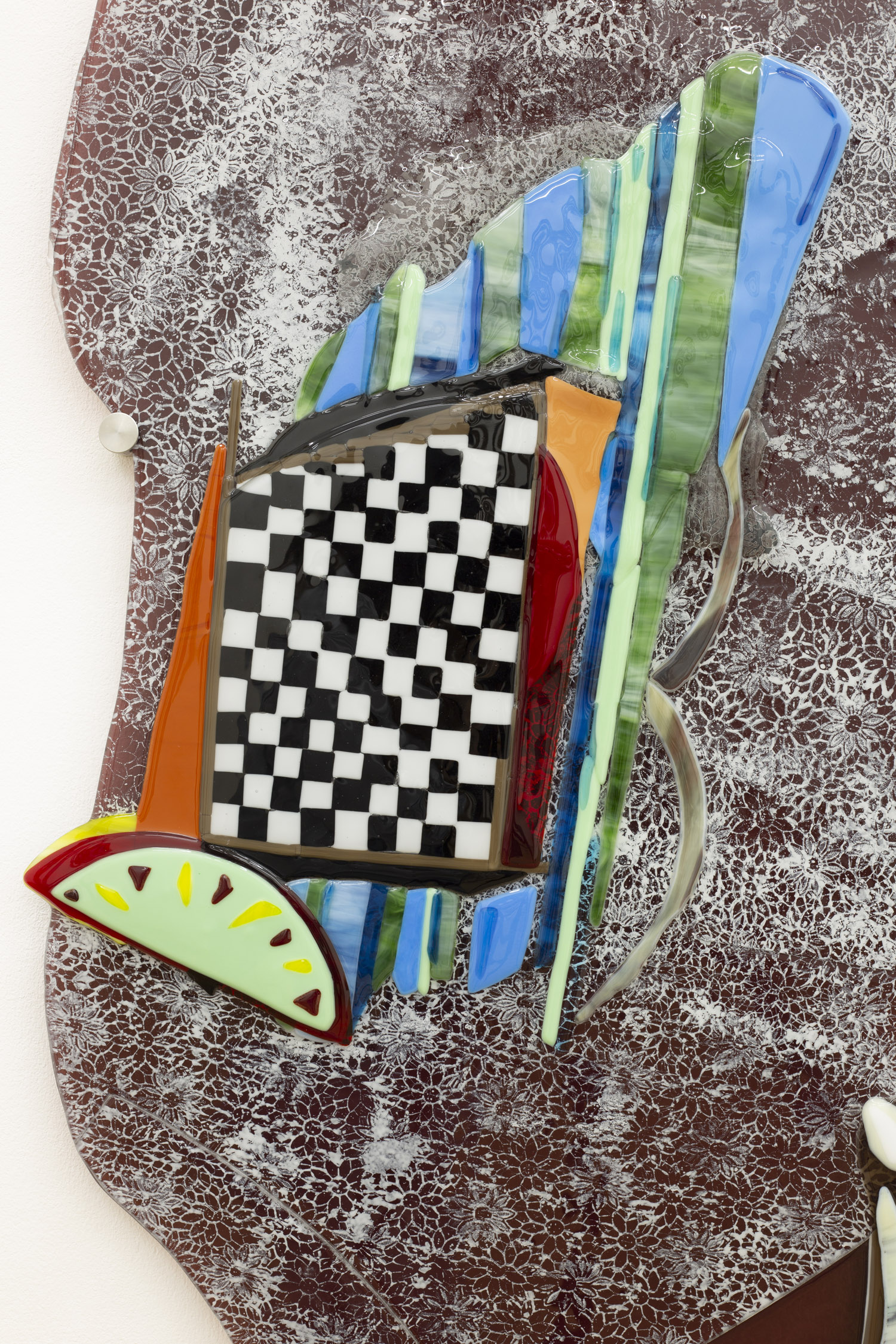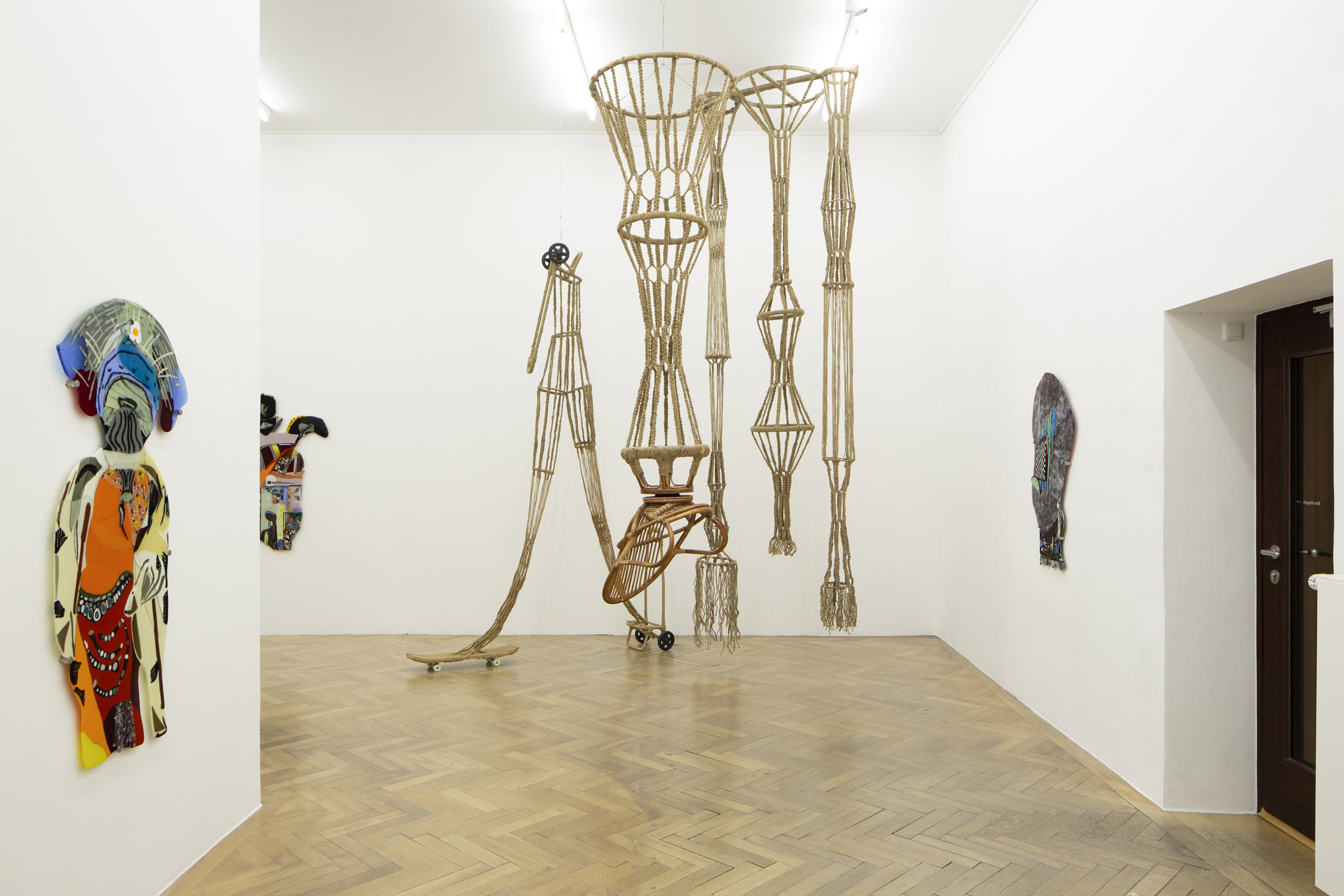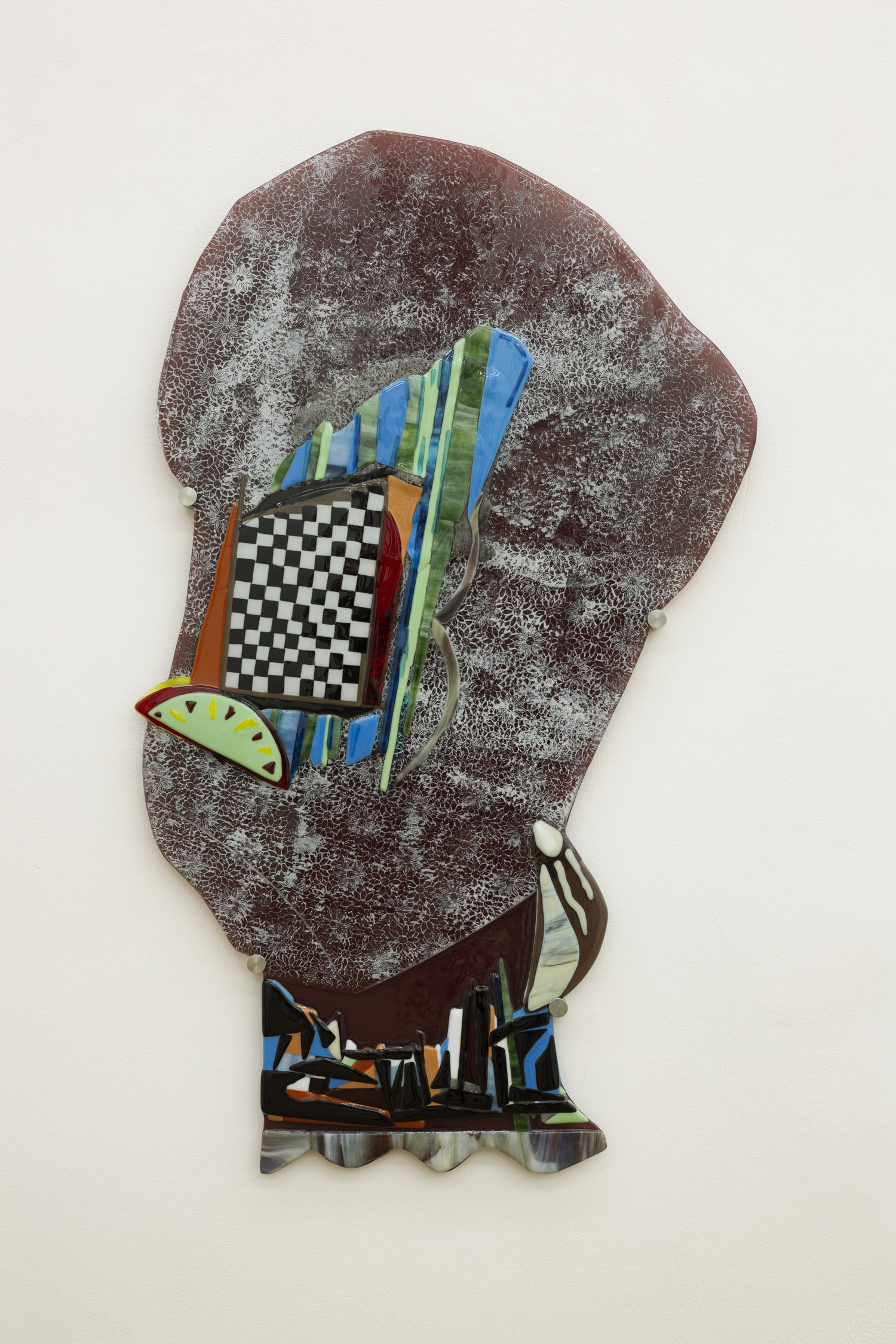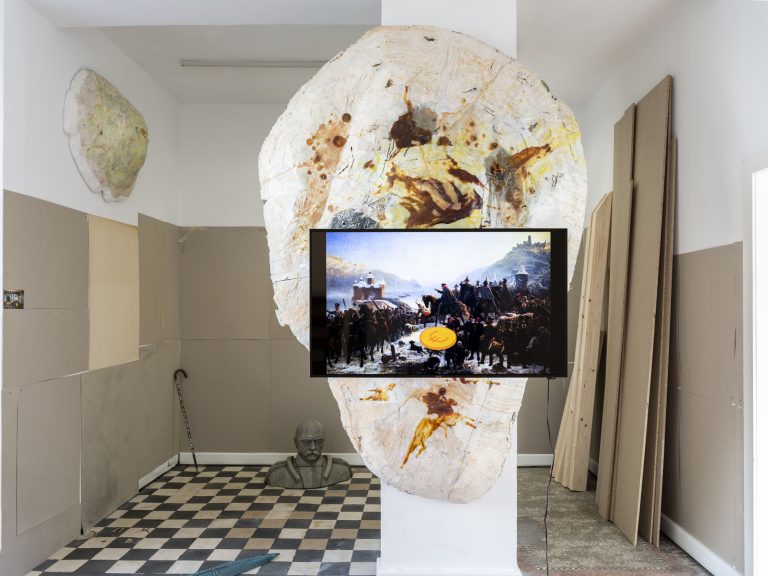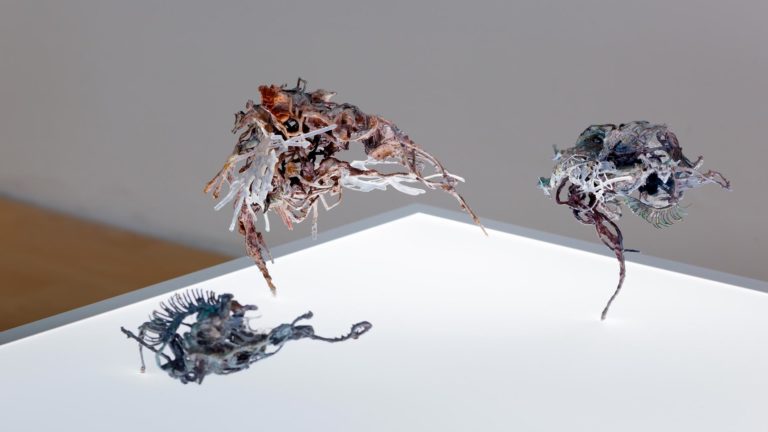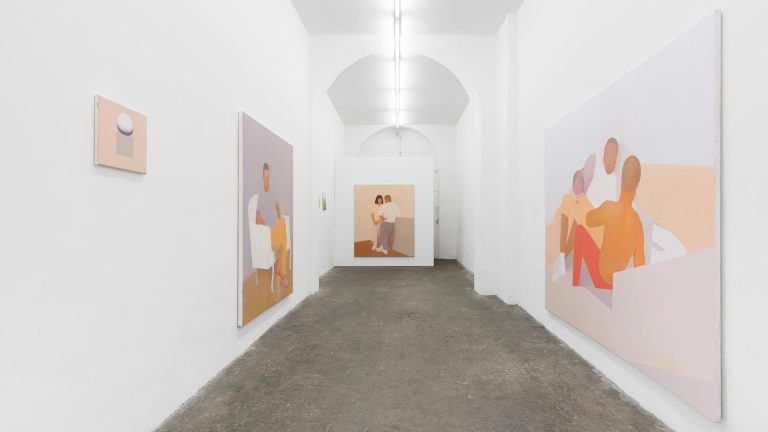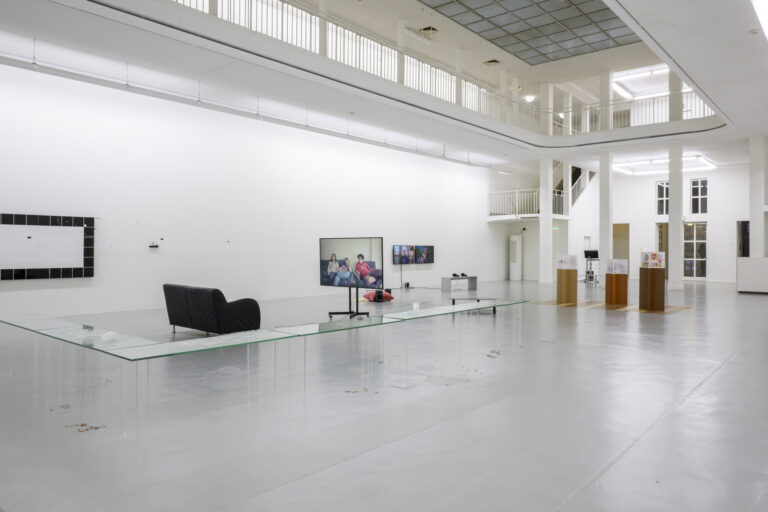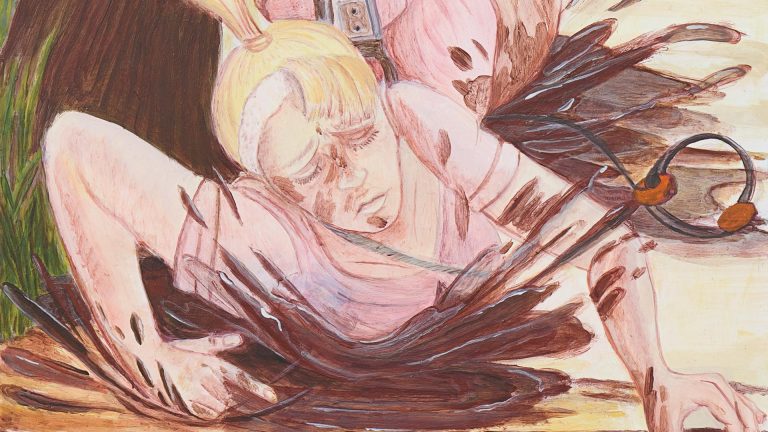The duo exhibition shows works by artists Maddy Arkesteyn (1966–2012) and Ana Navas (b. 1984). The two artists are not only linked biographically by the fact that they both completed the two-year studio and tutoring program at De Ateliers in Amsterdam, even though 23 years have passed between them and they have never met in person. In their artistic practices Navas and Arkesteyn share a strong examination of form and abstract bodies – in the play of contours and in the tension between form and formlessness. Both demonstrate an interest in the transformation of forms and in the negation of meaning as a potential space for transformation.
In Maddy Arkesteyn’s work there is a recurring theme of loss and control. What potential does the loss of control, transformation and liberation hold? These questions occupy Arkesteyn not only in her artistic work but also in her thinking. In 2009, she completed a master in philosophy at the Free University of Brussels with a thesis on “The connection between passion and loss of self-control. The loss of self-control as an ability and a way of understanding”.[1]
The tension between control and function and play can also be found in the photo series A promise of happiness (2008), from which two motifs can be seen in the display cases next to the entrance outside the gallery space. The black and white photographs show a surface littered with plastic bags. The bags have taken on a life of their own in the wind, becoming sculptural elements that dance and reform with each gust. In their neutralizing black and white, the photographs look like the documentation of a performance, a choreography of chance. The quantity of plastic bags shifts the focus to the relationship between them, the space between the objects. Arkesteyn has taken the photographs after the market hours in Brussels-Molenbeek. They show the moment when the bags lose their function and get out of control. Arkesteyn described them as landscapes shaped and changed by the wind:
“Things fall outside any order or control and are thus equally liberated. They have detached themselves from their function. They are landscapes shaped and changed by the wind. The objects are left to their fate and need to be cleared away as quickly as possible. But precisely this fleeting moment of being left behind and abandoned gives them the chance to escape. During that uncontrollable moment, the sense of freedom is palpable. Losing orientation is a moment of transformation, of loss of identity, of being on the way to another form and definition. It is precisely then that one emerges, most authentically, because there is no definition to cling to.”[2]
Arkesteyn understands chance as a moment of loss of control as liberation from form, intention and meaning, and the possibility of transformation and gaining knowledge.
In the gallery’s interior, macramé sculptures from the body of work Brancusi’s Psychosis Goes Exotic (2010) are on display. Arkesteyn acquired the knotting technique in 2010 during a three-month residency at the Chinese European Art Center in Xiamen, China. The title refers to Constantin Brâncusi’s Endless Column, an almost thirty-meter-high sculpture that rises into the sky and is composed of a series of uniform octahedral elements reminiscent of capped pyramids. Similar to Brancusi’s endless column, Arkesteyn’s knotted sculptures consist of vertically aligned elements of geometric solids such as cuboids and cylinders, but also objects such as an upside-down hanging armchair, a skateboard and a luggage trolley that are woven into them. The knotted forms are inspired by laundry drying and food cover baskets as well as by Oskar Schlemmer’s costumes for the Triadic Ballet. The contrast of seating furniture and rolling objects creates a tension between stillness and movement – similar to the fleeting plastic bags that freeze in the moment of the photographs. The vertical layers of macramé form an expansive architecture in which the interwoven objects seem to drift apart. ‘Where in fact am I? Here, amidst these things, in which layer do I find myself?”, this is the question that Arkesteyn hoped to evoke in the viewer of her work.[3] It is also the feeling I imagine I would have if I were to stand in the middle of the macramé structures. Above and below dissolve as if in a limbo – like the dizziness that can occur when you look up at a tall building. This moment of dissolution, of losing oneself in the work, of losing control, can also be found on the level of production, in which the artist seemed to lose herself in the endless process of knotting.
Ana Navas (b. 1984 in Quito, Ecuador, lives in the Netherlands) also explores the translation of three-dimensional bodies into two-dimensional surfaces in her works (as in her solo exhibition Zigzag & other Ws at the gallery in spring 2022). In her artistic practice, Navas employs and combines sculpture, painting, video and performance. She examines the genealogy and development of design and art objects as well as processes of translation and transformation of form and visual language(s).
The starting point for the new series of glass works are modern art historical paintings, portraits by for example Henri Matisse, Pablo Picasso or Marcel Gromaire, which allude, in their titles, to exoticism or nationalities. To represent a particular cultural sphere, the environments of the depicted people (mostly anonymous women) are peppered with textile elements such as scarves, dresses or blankets, creating a stereotypical ambience. Navas extracted these textile elements, collaged them into imaginary bodies and transferred them to glass. In her collages the absent body becomes the body – the original setting becomes the protagonist. Navas’ collages are abstract compositions of both monochrome colors and multichrome patterned or textured surfaces which become a projection template for figurative associations. They are reminiscent of masks and costumes and play with other utopian identities. The contours – not only the outline of the object, but also the contours of the surfaces joined together by the glass fusing – evoke figurative associations, which are reflected in the titles of the works such as Skirt headed or Vase pouring prints. Navas’ series of works underscores the difficulty of encountering an unfamiliar image or object without projecting familiar ideas onto it while trying to make sense of it.
(Text: Nadja Quante)
[1] Het verband tussen verlangen en controleverlies. Controleverlies als vermogen en vorm van inzicht,
[2] Maddy Arkesteyn on the occasion of her photo exhibition A Promise of happiness at Galerie Sabine Wachters in Brussels in 2008 (now Knokke).
[3] Anna Luyten: Rewritten Reality. In: When the second voice does not occupy a stable position. Calcite Revolt: Amsterdam 2012

